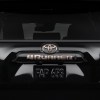
What Happened to the Buick Terraza Minivan?
The minivan occupies an interesting place in American culture. The brainchild of a failing company, the minivan hit all the necessary notes to save Chrysler from financial ruin in the Eighties and create a whole new market. With its Dodge Voyager and Chrysler Caravan, Chrysler elicited a lot of competitors. Among them was the short-lived Buick Terraza. If you’re not familiar, here’s a little history of this ill-fated foray into the minivan market.
Was the Buick Terraza a good minivan?

Before delving into what set the Buick Terraza apart, for better or worse, it’s important to understand a bit about the minivan market at this time. When Chrysler introduced the minivan to the American market in 1983, the car generated considerable demand because it provided a level of practicality that appealed to families.
However, by the mid-2000s, SUVs were providing that practicality, and consumers were buying them up in spades. By 1999, SUV sales eclipsed that of sedans for the first time. Their popularity continued in the decade that followed, which did not bode well for minivans launched during this period. The Terraza first hit dealerships in 2005 and was a decent vehicle, even if not especially distinguished. Still, against popular names at the time like the Jeep Grand Cherokee, Chevy TrailBlazer, and Ford Explorer, it was hard for the Terraza to make much of an impact.
Not that the Terraza was a bad minivan per se, as per reviews on sites like NADAguides, and Every Auto. It was far from perfect, as a cursory review of Repair Pal reveals, but it was a fairly solid choice for a minivan at the time. As per Cars, the powertrain was a 3.5-liter V6 engine with a four-speed Hydra-Matic transmission. This pairing was available for the base CX or top CXL trims, though you could get either with either FWD or AWD. The Terraza also came with quite a few amenities, including dual-zone air conditioning, cruise control, a six-way power driver’s seat, an eight-speaker sound system, and power windows.
Why was the Buick Terraza discontinued?
Unfortunately, poor market timing was partly why Buick discontinued the Terraza. It suffered from low sales, as did its competition in the minivan market. With SUVs surging at the turn of the century, minivans began to seem decidedly less trendy and more a thing of the past. For many younger consumers, minivans were their parent’s cars. While they had the same needs for practicality, an SUV provided that without the Baby Boomer association.
According to the Atlanta Business Journal, the Terraza’s discontinuation was also part of General Motors’ larger struggles. Its end came alongside the closure of the Doraville, Georgia plant in 2008. The closure was part of a multi-year restructuring designed to save billions of dollars due to increased competition and decreased consumer demand for its vehicles. At this time, they had lost $4 billion in the first three quarters of 2005 – the same year they launched the Terraza.
With the Doraville closure, eight other U.S. plant closures, and the loss of 30,000 jobs, GM likely had no time to market the Terraza properly. While it wasn’t distinguishing itself with best-in-class awards, it might have gained a foothold in its segment. So, with the rise of SUVs and the decline of Buick’s sales, the Terraza never really had a chance.
Have other minivans fallen victim to consumer demand for SUVs?
The Buick Terraza isn’t the only minivan consigned to used car lots and junkyards. Another minivan that suffered from poor launch timing was the Chevrolet Uplander (2005-2009). It was a rebadged variant of the Terraza that was also killed by low sales. Launching even further into the SUV surge was the Volkswagen Routan (2009-2012). It wasn’t a bad car, and its excess inventory paved the way for the 2013 model to become a fleet vehicle exclusively.
The Ford Aerostar was a contemporary of the Voyager and Caravan, launching in 1986 and lasting until its discontinuation in 1997. It didn’t fade completely away, though, as its foundational elements were used in the Ford Windstar, introduced in 1995. Given the Windstar’s rollout and a regulatory requirement that would have necessitated an Aerostar redesign of its front to add dual airbags, Ford ceased production of the minivan.
The original Nissan Quest has also disappeared from all but a few used dealers lots. It was first launched in 1993 but was discontinued in 2002. It was resurrected a year later but then discontinued again in 2009. Its final run began in 2011 and ended in 2017. At the end of each period, the Quest saw significant declines in sales, prompting Nissan to redesign it. Still, while there have been rumors that Nissan may try to resurrect the Quest again, there are no publicly announced plans yet.
It remains to be seen whether minivans can claw back some of the market shares they’ve collectively lost over the past couple of decades. However, despite their prominent place in auto history, it’s unlikely they will reclaim their place in the American popular imagination in the future.


